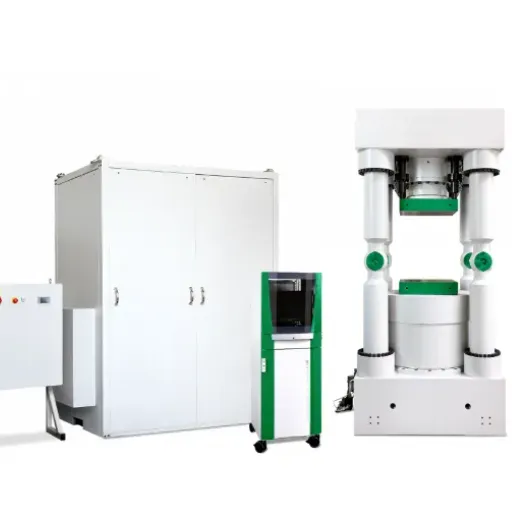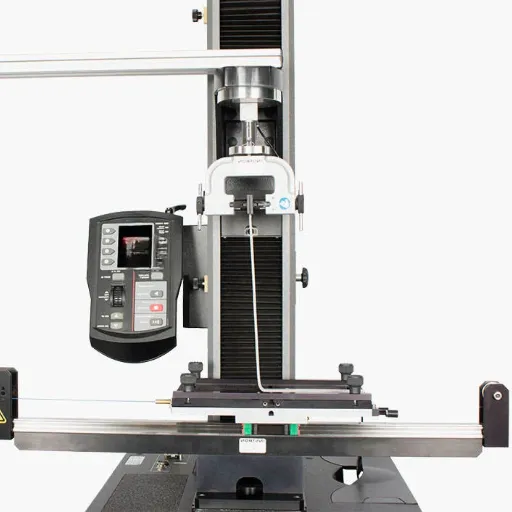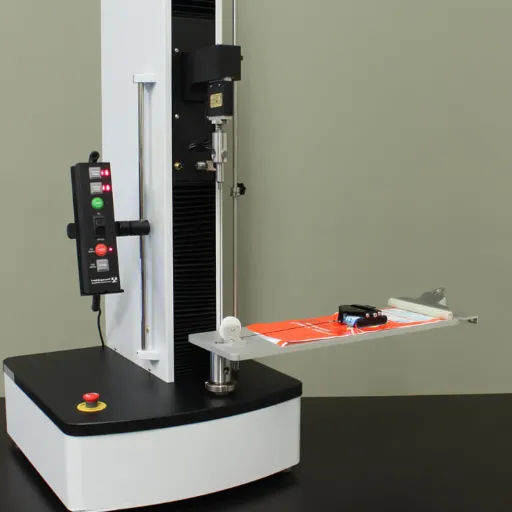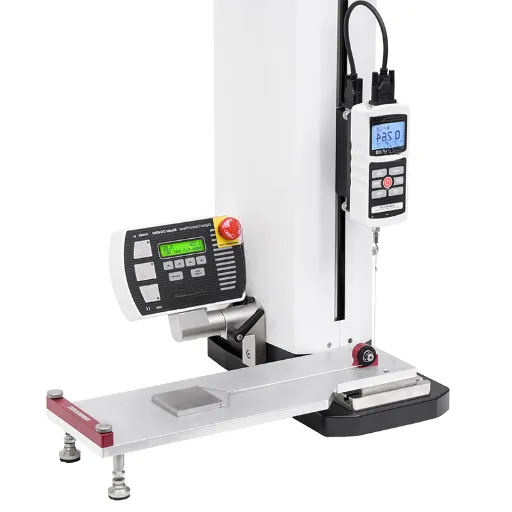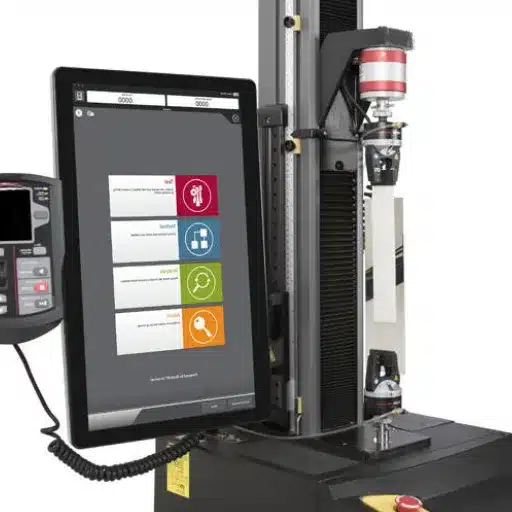Concrete plays an all-important role in the construction industry as a structural element for everything from tall skyscrapers to resilient bridges. Ensuring strength and durability of the material underpins the safety and longevity of many structures. Enter the Concrete Compression Tester. This robust and precise piece of equipment tests for compression with great accuracy so that engineers and construction professionals may grade concrete with respect to strength and quality. Compression-testing significance, the attributes of a good testing machine, and how it works to achieve safer construction projects of great performance, will all be looked upon herein.
Understanding Compression Tests
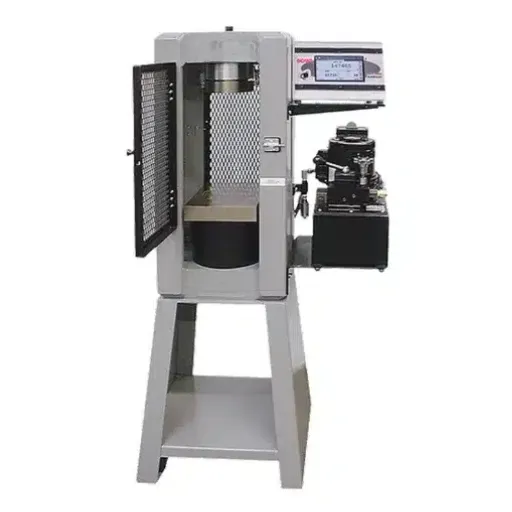
What is a Compression Test?
Compression tests are known as one of the basic procedures that test the strength of materials under compressive forces. Under these tests, a material is reacted upon by an external force acting in the crushing mode of operation. This yields valuable information regarding the strength, durability, and general integrity of construction of the material. Construction materials such as concrete, metals, and composite materials are usually tested for their capacity to withstand these forces to meet the relevant safety and performance standards.
Thereafter, the gradual increase in compressive force is applied through testing machines to the specimen. Samples are placed between two compression plates, and force is applied until deformation or failure. The critical data collected is the maximum load the material is able to bear and deformation behavior with respect to time. From this gathered information, the engineer is able to determine whether or not that specific material is appropriate for certain uses, such as construction or manufacturing industries.
Compression testing is done for safety and reliability concerns in different industries. Construction, for example, tests if concrete is strong enough for important structures such as bridges and buildings. If compression is not tested accurately, the structure could go in failure, having its own consequences. These tests ensure that materials will behave as expected under real working conditions and give a basis for safer and well-engineered designs.
Importance of Compression Testing in Construction
Capable of huge import for the safety and durability of construction works, compression testing determines whether the materials like concrete, steel, and other structural materials can withstand some forces generated during use. Real-world-type pressure conditions are infused during the test to establish the bearing capacity of materials, according to the safety standards enforced by engineers. Testing must be accurate to minimize the structural failure cases and maximize the reliability of the buildings and infrastructure.
One considerable benefit of compression testing is that it contributes to optimizing structural design. Engineers can decide types, amounts, and locations of materials based on considerations relating to a material under pressure. Thus, balance in cost and strength can be achieved in the structure. Without these data, structures could be over-designed, resulting in unreasonable expenditures, or they could be under-designed, leading to unsafe structures.
The testing also supports compliance with industry regulations and building codes. Construction and development are bound by codes for guaranteeing safety to the general public. These tests are usually required for legal certification of standards or regulations. Besides ensuring compliance, constant testing on materials will develop trust among stakeholders, as it puts the image of quality and safety on the table. Therefore, it is the compression testing that paves the way for the formation of strong engineering structures that will fend for durability and modern-day utility requirements.
Overview of Compression Test Machines
Such machines are specialized in compressive strength evaluation. By applying some force to crush or deform a specimen in any manner, these machines are used for measuring the ability of the specimen to withstand such crushing or deformation. They are usually provided to test concrete, metals, plastics, and composites to ensure they meet safety and performance standards.
A typical compression test machine comprises a sturdy loading frame, power plant, and measuring system for force and deformation. The machines are operated with the material sample placed between two plates where a force is applied at a uniform rate until the material fails or a limit is reached. Properties such as the maximum load the material can bear, limits of elasticity, and deformation features are thereby studied.
Peak worth to construction, transportation, and manufacturing of compression test machine(s) results: to ensure and ascertain that materials can withstand stresses as expected in final-world applications, so that structural integrity may be ensured together with the common safety concern. These machines basing upon one-hundred percent precision and reliability of data provide for products that can be quality-hard and latterly certified with reference to iso standards in respect to decisions so informed.
The Technology Behind Compression Test Machines
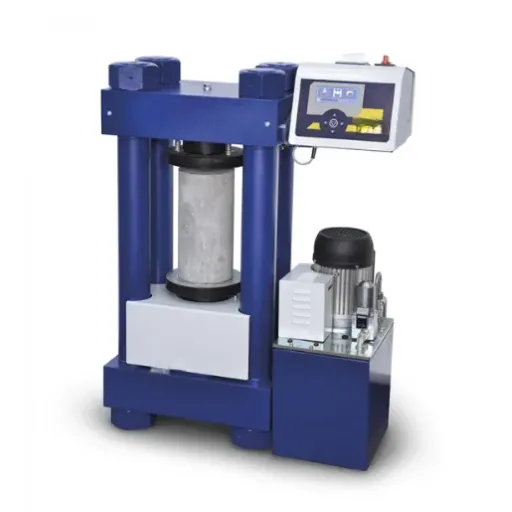
Key Features of Concrete Compression Testers
Concrete compression testing machines are the main tools used to check the strength of concrete and other construction materials under compressive loading. These machines guarantee that the utmost load the specimen can carry before failure is measured with precision and uniformity. The machines are fitted with load sensors that ensure accurate results to meet quality verification and conformity to lay down specifications.
Major features of concrete compression testing machines are rugged construction to work under very high-pressure test environments, easy rating system interfaces, and digital readouts to record data swiftly and accurately. Most of the models allow programmable operation to accommodate certain test requirements depending on specific material and methods.
Furthermore, safety mechanisms are indispensable parts of an advanced concrete compression tester. Protective shields, emergency stops, and overload protection make sure of the safety of the operators, and in any case, serve to prolong the life of the machine and testing equipment. Thereby, concrete compression counters become indispensable in checking the structural reliability of construction projects on various levels of safety standards.
Loading Mechanisms and Load Control
The loading mechanism assumes an ample importance in concrete compression testers since it applies force to the specimen in a controlled and uniform manner. These mechanisms are usually hydraulic- or servo-controlled so as to apply loads with a high degree of precision. Hydraulic systems, the force being produced by pressurized fluid, are widely used because of their reliability and capacity to impose large loads; servo systems, on the other hand, are more accurate during low-load applications.
Test results must be repeatable and accurate, requiring load control equally important-the application of a constant rate throughout loading, commonly specified by international standards like ASTM or ISO. Precise load control accordingly ensures that the load rate delivered is not subjected to abrupt changes that generate erroneous readings or damage the specimen. Further advanced control methods may include feedback loops with real-time corrections, automatically adjusting the velocity of the load actuator without operator intervention, ensuring testing is performed at precise load rates.
Good loading loading mechanism with load control will ensure reliable and valid test results. The two act together to recreate the stresses that concrete would undergo in a real-world application, which truly provides information about the quality and performance of concrete. Through abiding by standards and using the most advanced testing technologies, concrete compression testers are immensely helpful in safeguarding strength and durability of construction projects.
Automatic Compression Testing Technology
The rise of automatic compression testing technology has brought about a modern way of assessing concrete strength with minimum human error and maximum efficiency. These systems were thus engineered to apply load and measure the response of concrete specimens in compression automatically. Equipped with highly precise sensors and computer software-based operations, they yield very accurate and repeatable results and hence are indispensable in projects undertaken for construction quality control.
The main advantage of automatic machines for compressive strength testing is that of uniformity. Errors do go into any manual operation, being caused by variability in the application of load or simply in procedures carried out by different operators. In such cases, automated test methods ensure no loss of consistency. According to prescribed standards, whether testing for reinforced concrete at a small level or at a composite design level for large-scale infrastructure, the entire process during testing will be consistent. Reliability in determining whether the material satisfies the structural requirements is thus enhanced through consistency.
Other than this, automated systems usually come along with acquisition and data management features, able to record test results and analyze the data. Digital integration makes it easier to report, comply with regulations, and make decisions. Automatic compression testing technology plays a prominent role in making construction practices strong and safe with its very high degree of strength, reliability, and ease of use.
Benefits of Using Compression Test Machines
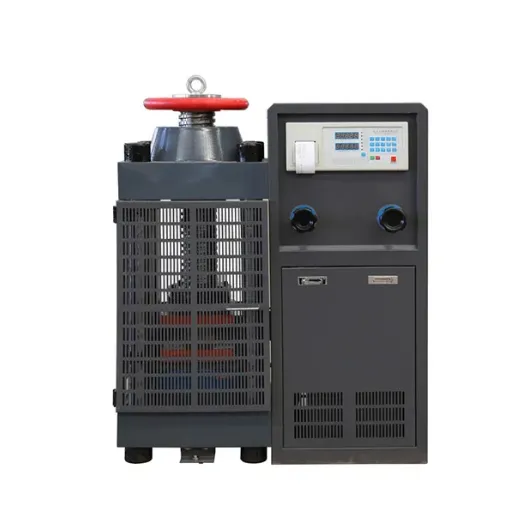
1Precision and Accuracy in Testing
Compression test machines bestow the ability of attaining precision and accuracy in measurements; a requirement that assures the structural integrity and safety of construction materials. The machines instill force on a material within limits, allowing the sample to fail while recording some important data, such as the maximum load and deformation response. The accuracy in the force application as well as the data collection gives consistency to the testing results, with discrepancies and errors minimized almost to zero.
Therefore, the testing of materials for any weakness is detected; irregularities in quality and non-adherence to industry specifications are also noted. This accuracy is paramount for the safety of construction projects and for meeting statutory requirements. Consequently, engineers are able to design structures based on tested data, which safeguards them from failure when subjected to force due to incapacity of materials.
Even newer compression test machineries experience modern sensors and automation features, raising reproducibility of tests and reducing human errors in the procedure. Streamlining the test procedures saves time and lends validity to the result. Quality-assurance-related machines submit lucid and consistent results, hence playing a crucial role in the success of engineering projects worldwide.
2Efficiency in Material Testing
Material testing is quite essential; hence, efficiency guarantees the project’s safety and expected performance in construction, manufacturing, and engineering. The advent of new technology using automated systems, on one hand, and digital sensors, on the other, have changed the landscape of testing materials for the better in terms of speed and accuracy. This prevents human errors, hence giving reproducibility, and also reduces the time taken for underpinning a thorough evaluation of materials. This results in the enhancement of the entire workflow with dependable evaluations.
Due to standardization of processes, automated testing systems speed up the entire process of test execution and help to overcome inconsistencies that would arise through manual intervention. They can perform bulk testing, thus making them the preferred choice for large-scale industrial applications. In contrast, digital sensors help with real-time data gathering and analysis, greatly aiding in the timely and well-informed decision-making process. This type of data collection and processing takes place simultaneously, ensuring that deadlines are met without any compromise on the quality of the tests.
Such technological breakthroughs are making material testing easier, uniform, and dependable. Thus, efficiency is earning a giant leap, not just from cost-saving avenues but also in support of stringent safety and quality standards. Through the development and application of state-of-the-art material testing equipment, industrial sectors can remain competitive with the current time while supporting the integrity of their projects.
3Reliability and Consistency of Results
The integrity of data and the safety applications hinge on reliability and consistency in material testing. Were it to realize this reliable result, it has to go by means of the standards that remove any variability. These standards will ensure others test materials in a consistent way, which makes comparing results obtained from various test laboratories over a period of time feasible.
Calibration of testing equipment and its maintenance constitute one of the crucial factors that allow for the achievement of truly reliable results. This involves regular calibration of instruments to give measurements that are accurate and also preventive maintenance to check if wear by itself would give errors. Besides this, quality checks must be made on test samples from time to time in order to maintain their uniformity, which reduces the chances of getting anomalous results.
Lastly, operator skill plays a big role in ensuring consistent results. Training in the right way prepares technicians to follow set protocols and identify sources of errors during testing. Through standard techniques, properly calibrated equipment, and expert operators, organizations may see added value in the maintenance and consistency of their materials testing procedure, as these results are expected to uphold safety, quality, and regulatory standards.
Applications of Compression Testers Across Industries
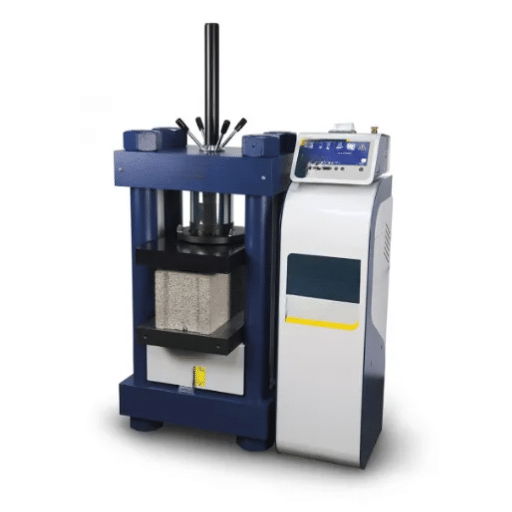
Construction Industry Applications
Compression testers are vital in the construction industry for determining the strength and durability of things like concrete, bricks, and mortar, which need to endure specific loads and pressures in order to sustain buildings, bridges, and other infrastructure. Compression testers identify weaknesses in materials under conditions that simulate the actual ones the material shall undergo in service. These weaknesses may then be remedied by improved construction hoisting.
One of the primary examples is measuring compressive strength of concrete, a variable factor in order to assess the applicability of concrete in different construction works. Concrete samples carry a load in a controlled condition so that it does or does not bear pressure-level measurements for cracking or failure. This test guarantees a building through its code and standards; therefore, it enhances the assurance that the material used·shall stand·for the stress in operation.
Consequently, the use of compression testers is for the purpose of determining the strength of bricks and mortar so they can combine together and provide the construction project with the strength required. The process provides for minimizing failures of the materials so hazards and delays in projects are reduced. In construction, compression testing should be used to ensure safety, quality, and durability at every stage of the construction development.
Manufacturing and Material Testing
Manufacturing and material testing are the processes that guarantee the structural integrity and performance of construction materials. These tests further establish whether materials such as concrete, bricks, steel, and mortar meet the specifications required for strength, durability, and safety. Weaknesses can be determined in time by material testing so that building failures would be less likely and that the materials conform to standards and regulations for the construction industry.
Material testing is done mainly for confirming the quality and consistency of the materials before they are used for actual construction. Such tests include hardness, tensile strength, and compression tests that tell how a material will behave under stress or in an atmosphere of certain conditions. Compression testing determines whether a concrete or brick can resist the load it is supposed to bear in a completed structure. These tests ensure that the materials are right for the intended purpose and vendors avoid taking costly repairs or delays down the life cycle of the project later.
In addition, testing of materials can stimulate innovation and drive sustainability in the construction sector. Knowledge about the properties of materials enables manufacturers to figure out alternative materials that would be environmentally friendly and resource-efficient, such as recycled or composite materials. Such materials are thoroughly tested to establish that their performance matches those of traditional materials, thus giving equal weight to both environmental issues and structural considerations. By and large, manufacturing and material testing ultimately serve to improve construction practices so that they may be safer, more resilient, and sustainable.
Research and Development Uses
The compression force testing method finds its application in research and development when determining strength and resistance to loads within a product or material. The test describes how the material behaves under applied force that tries to compress, crush, or deform it. In turn, this value states the capability of the material to resist structural stresses; thus, its importance when judging a construction material: concrete, metals, and polymers.
Material behavior testing offers some of the most important applications for compression testing. Materials behave differently with variations in humidity, temperature, or pressure levels. With the imposition of such conditions, it is incumbent on the researcher to observe the durability of a given material over time and with respect to the use cases dictated by those circumstances. All of the knowledge would be relevant for industries such as construction, aerospace, and packaging, where reliability and performance impact product safety.
Another important use of compression testing is quality assurance or design optimization. Manufacturers rely on this testing method for the purpose of making sure their materials comply with safety and regulatory standards. Also, design of the products can be optimized based on the results, allowing the implementation of newer, stronger, and more environmentally friendly material solutions. In general, compression testing assists researchers and engineers by providing information that helps improve performance of materials and applications that are much safer and more efficient.
Maintenance Tips for Optimal Performance
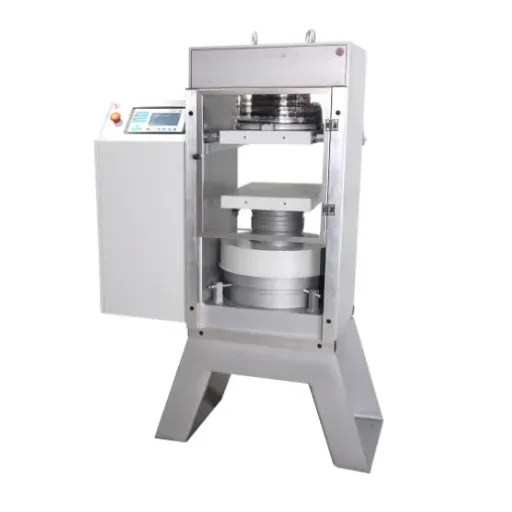
Routine Maintenance Practices
Routine maintenance is crucial in keeping equipment performing at the peak for a long time. Regular inspections need to be done on the equipment for any visible signs of wear, damage, or accumulation of debris. Small things such as a loose Bolt o one fine crack should be rectified immediately to prevent further deterioration. Keeping an inspection log will help in identifying trends and pinpoint recurring problems.
It is equally important to clean the equipment every time after using it, ensuring that dust, dirt, or any residual part of the product is not hindering its functionality. One should consider cleaning methods that don’t inflict harm on sensitive parts. When it comes to machinery, ensure that its moving parts must be lubricated, which will help in creating less friction and less wear with time.
Lastly, always follow the service schedule as prescribed in the manufacturer’s guidelines. By preemptively changing worn components and periodically calibrating, one can greatly extend equipment life. Doing so will help reduce unplanned downtime and keep the equipment performing optimally.
Common Issues and Troubleshooting
Equipment Noise
Such odd noises can indicate the loose of components, misalignment, or absence of proper lubrication. Inspect the moving parts for wear or damage, and tighten loose fasteners. Should the problem persist, examine if debris or dirt in essential parts could hinder smooth movement.
Overheating
Such a problem could arise from a lack of lubrication, dirt on air filters, or heavy work to engineer its load. At first, check all points of lubrication for adequacy and replace dirty air filters with fresh ones if necessary. Also, check whether the equipment is running beyond its limits. If it is, it should be set to normal work interference.
Loss of Efficiency
A noticeable drop in performance can stem from dirty components, worn-out parts, or improper calibration. Ensure that all critical components, such as belts, gears, or filters, are clean and intact. Periodically recalibrate the system according to manufacturer guidelines to restore optimal functionality. If issues persist, a professional troubleshooting service may have to be called upon to analyse for underlying problems.
Ensuring Longevity of the Compression Tester
The way to ensure the compression tester lasts longer is to test the compression tester under some maintenance routines. Amongst other things, clean the tester after each use to ensure that over time dust, debris, or any other substances cannot undermine its functioning, preserving the chief components like seals, which could hardly tell time with dirt or wear, thus fall to erroneous readings. Also, store it well in a clean dry atmosphere so that moisture cannot destroy it through corrosion.
Routine checks ensure that minor issues can be addressed before they turn major, undermine performance, or even become dangerous. Check for wear or damage, including but not limited to cracks, frayed hose, or loose nozzle. Usually replace whichever part is worn out. Also consider manufacturer’s schedule for any calibration and part replacement which would give precision to the tester.
Lastly, treat the compression tester gently to avoid any unnecessary wear and tear. Try to follow correct usage instructions; do not exert too much force and keep away from extreme environmental conditions. By adhering to these practices, you should ensure that your compression tester will live a long life while remaining dependable and accurate for many years to come.
Frequently Asked Questions (FAQ)
Q: What is an electronical compression testing machine?
A: Electronical compression testing machine is a specialized testing device applied for measuring the compressive strength of materials, chiefly concrete. Advanced technology furnishes a controlled load to a specimen so the outputs are valid test data to analyze.
Q: How do compression tests work?
A: In the process of performing a compression test, the specimen is inserted between two platens provided in an electronic compression testing machine. The machine subjects the specimen under increasing load until failure. Thus, the compressive strength of the tested material can be obtained by observation of the specimen’s deformation.
Q: What are the important elements of a compression testing machine?
A: The important elements of an electronic compression testing machine are a load frame, a hydraulic pump, a load cell, and a touchscreen controller, all of which operate in unison to attain correct loading during testing alongside data acquisition.
Q: Why is the loading rate important in compression testing?
A: Loading rate causes variations in the test results. For compressive strength measurements to be accurate, loading must be applied at certain rates, which are specified by the respective standards, such as ASTM, ISO, and others, so that tests can be comparable.
Q: What safety features are included in an electronic compression testing machine?
A: Safety features in such machines include emergency stop switch; hydraulic safety valve; and piston over extension limit switch to protect the operators and the equipment during testing operation.
Q: How is compressive strength calculated from the test data?
A: Compressive strength is obtained by dividing the maximum load applied during the test by the cross-sectional area of the concrete specimen. The results so obtained can be used to assess the material depending upon the standards specified.
Q: What types of specimens can be tested using these machines?
A: Electronic compression testing machines allow testing of a variety of specimen types, such as cylinders, beams, and fragments of concrete. The versatility of these machines allows a diverse range of materials to be subjected to compressive strength evaluation.
Q: What is the importance of the modulus of elasticity in compression testing?
A: The modulus of elasticity is a very important parameter in understanding the material behavior with the load. It relates stress to strain in the elastic map and is required in concrete and other material performance during compression tests.
References and Additional Resources
-
Automatic Concrete Compression Machines – Gilson
Focuses on fully automatic machines for testing concrete specimens with minimal user intervention. -
Compression Testing Machine – DirectIndustry
A directory of compression testing machines from leading manufacturers like Shimadzu and SINOTEST. -
Concrete Compression Machines – Humboldt
Offers a wide range of concrete compression machines and accessories for various applications.

